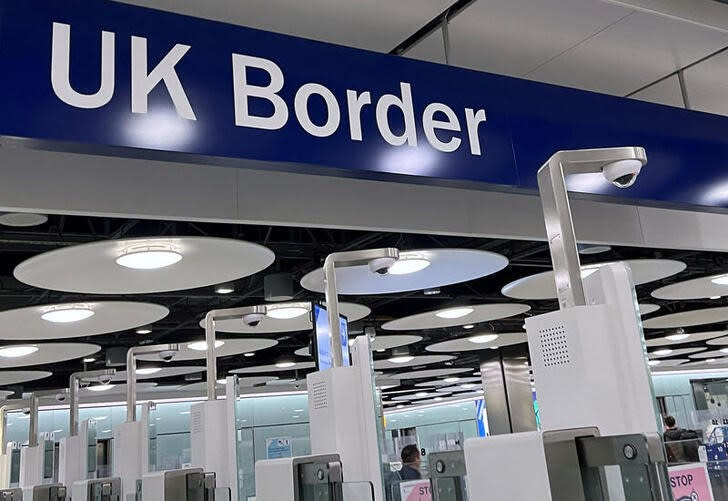Annual migration to UK fell to 685,000 in 2023 from record high

By Sarah Young and Muvija M
LONDON (Reuters) -Annual net migration to Britain fell to 685,000 last year, from a record high of 764,000 in 2022, but officials said it was too early to declare a downward trend in what will be a major battleground in Britain's July 4 election.
Sunak, who surprised the nation on Wednesday by calling the vote, is trailing the opposition Labour party in the polls.
He has repeatedly promised to reduce the number of migrants coming to Britain through both legal and illegal routes, while Labour leader Keir Starmer said in November that the level of legal migration into Britain was "shockingly high".
The figures published on Thursday show fewer people came in 2023 compared with the record 2022 figure of 764,000, which the Office of National Statistics (ONS) had revised up from 745,000.
But the ONS said it was too early to say if the fall was the start of a new downward trend.
Eight years after Britain voted to leave the European Union to "take back control" of the country's borders, migration remains a hot political issue and it will be prominent in the election debate.
Net migration to Britain in 2015, the year before the Brexit referendum, was 329,000.
Sunak has said he would tackle illegal migration by sending asylum seekers to Rwanda.
To cut legal migration, he brought in new rules this year to stop international students bringing in family members, increased the salary threshold for skilled worker visas, and also restricted care workers from bringing in dependents.
But industries such as health, social care and hospitality have criticised the rules, saying they struggle to recruit Britons, while universities have warned of financial losses if fewer international students come.
According to the latest ONS data, more of those arriving from outside the European Union in 2023 were coming for work, replacing study as the main driver for long-term migration.
Almost half of those coming to work arrived from India or Nigeria, usually to work in the health and social care sector.
(Reporting by Sarah Young and Muvija M; editing by William James, Paul Sandle and Alex Richardson)

 Yahoo News
Yahoo News 
